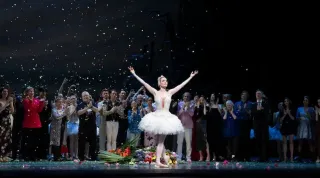April 23, 2017
48 Hours in Memphis
Beth J. Harpaz READ TIME: 4 MIN.
My ultimate destination was Mississippi to explore blues history. But to get there, I flew in and out of Memphis, Tennessee, an hour's drive from the Delta. With one day in Memphis on either end of my itinerary, I decided to visit four attractions there that would add to the music and civil rights themes of the Mississippi trip.
Those four Memphis stops, plus an evening listening to music on Beale Street, were perfect bookends for my Mississippi sojourn. But these attractions also make an easy and interesting two-day itinerary whether you use Memphis as a gateway for other parts of the South, or as a destination unto itself.
STAX MUSEUM OF AMERICAN SOUL MUSIC
One of the first things you see at the Stax Museum of American Soul Music is an exhibit portraying a Mississippi country church. That's because soul, like so many genres of pop music, has roots in the Delta.
The Stax recording studio was founded by a white sister and brother, Estelle Axton and Jim Stewart. But in an unusual arrangement for the era, Stax was also a place where whites and blacks worked together. And Stax's roster of black stars, including Otis Redding, Isaac Hayes and the Staple Singers, proved enormously popular with both black and white audiences, first in Europe and ultimately at home.
Stax eventually went bankrupt but the museum was built on the original site and does a terrific job showcasing everything from costumes to cars to walls of hit records. Videos of TV and concert performances will have you dancing your way through the exhibits.
SUN STUDIO
Sun Studio calls itself the "birthplace" of rock 'n' roll, and as every music fan knows, there's a straight line from the blues to rock. Among the Mississippi natives who recorded at Sun Records were B.B. King, Howlin' Wolf and Ike Turner. Turner played keyboards on what some regard as the first rock single, the Delta Cats' "Rocket 88," released by Sun in 1951.
But it was an 18-year-old who wandered into the studio in 1953 named Elvis Presley who took Sun's fortunes big-time. Presley recorded two dozen songs with Sun before switching to a national label to manage his rocketing career. An iconic photo displayed at the studio, dubbed the "Million Dollar Quartet," shows Presley back at Sun in 1956, sitting at a piano with Jerry Lee Lewis, Carl Perkins and Johnny Cash.
Lively guided tours of Sun Studio walk visitors through its hit parade with music clips and engaging anecdotes - including the tale of Sun founder Sam Phillips' improvised repair of a busted amp. He shoved a wad of paper inside and the fuzzy distortion became part of the label's trademark sound. You'll stand in the footsteps not only of the label's early stars but also more recent visitors like rock giants U2.
NATIONAL CIVIL RIGHTS MUSEUM
The story of the blues can't be told without looking at black history, from musical traditions brought here by enslaved Africans, to the music shared by black laborers eking out a living on Delta cotton plantations in the early 20th century.
One place to put that history in context is the National Civil Rights Museum, located in the former Lorraine Motel where the Rev. Martin Luther King Jr. was assassinated. The museum has extensive exhibits on slavery, segregation and the protests that powered the civil rights movement. Allow several hours to take in the engrossing displays, which include video footage of marches, riots and news reports from the era, along with engaging interactive exhibits that offer interviews with ordinary people reflecting on their personal experiences.
King was in Memphis to support striking garbage workers when he was shot while standing on a hotel balcony. On your way in, you see the balcony from outside, but at the tour's end, you'll see the spot where he was murdered from inside the hotel. It's a stunning, heart-stopping vantage point that brings you face to face with that watershed moment. April 4, 2018, will mark 50 years since that day.
GRACELAND
No trip to Memphis is complete without visiting Graceland, the mansion Elvis Presley bought in 1957 and lived in until his death 20 years later. The house - which feels remarkably small by 21st century standards - is a time capsule, complete with green shag rugs and carved animals in the famous Jungle Room. Guests are shuttled through by the hundreds in a remarkably efficient fashion, with each visitor issued an iPad and headphones so you can get information about what you're seeing at your own pace. The King is buried in the onsite Meditation Garden, along with his parents and grandmother. There's also a memorial gravestone for his stillborn twin brother.
But visiting the house is only half the fun. A $45 million complex opened at Graceland in March, adding displays that look at his career from his start at Sun Records, to his work in Hollywood, to his Vegas jumpsuit era. One area showcases his cars, another looks at his influence on other entertainers.







